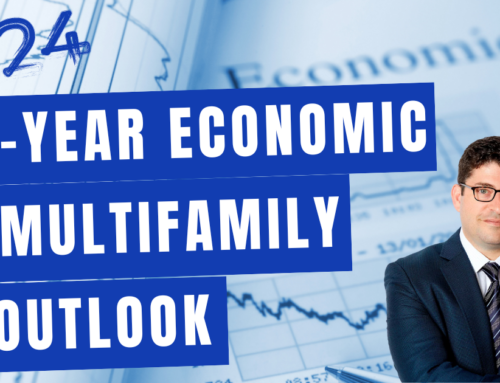Introduction
In the dynamic realm of real estate investment, transitioning from single-family properties to multifamily portfolios is an intricate process that demands comprehensive understanding and strategic planning. This paper offers a detailed exposition of the multifaceted considerations, benefits, and challenges intrinsic to this transition, aiming to provide an empirical roadmap for prospective investors.
The Underpinning Advantages of Multifamily Investments
Diversified Revenue Streams
A hallmark of multifamily properties is their inherent ability to ensure financial stability. With multiple tenants under one roof, the risk of revenue disruption due to vacancies is markedly diminished. Even if a few units become vacant, others continue to generate income, providing a safety net against financial troughs that can plague single-family investments.
Economies of Scale
Multifamily properties present operational efficiencies that single-family units often can’t rival. Centralized maintenance, bulk purchasing for repairs, and shared amenities can drastically reduce the per-unit cost, driving profitability.
Amplified Cash Flow
While the initial investment in multifamily properties may be higher, the potential for increased cash flow is undeniable. Efficient property management can optimize rental rates, maximize occupancy, and control expenses, resulting in an enviable net operating income.
Preliminary Considerations: Transition Foundations
Market Research
Any investment strategy is only as good as the research that underpins it. For multifamily investments, understanding the intricacies of the market becomes paramount. This involves a granular study of demographics, local amenities, transportation links, and even future urban development plans that might influence tenant demand.
Networking and Industry Relations
The real estate arena thrives on relationships. Associating with industry veterans, brokers, and other investors can offer insights that are often not publicly available. Such interactions can also lead to off-market deals, partnership opportunities, and invaluable mentorship.
Financial Blueprinting
Expanding one’s portfolio to include multifamily properties necessitates robust financial planning. Investors need to be astute about leveraging, understanding the nuances of multifamily financing, and being prepared for the capital expenditures that such properties might demand.
The Acquisition Matrix
Asset Evaluation
Beyond the apparent factors like location and aesthetics, multifamily assets warrant a rigorous evaluation. This includes assessing the property’s historical occupancy rates, studying existing tenant profiles, evaluating deferred maintenance, and even forecasting potential future income.
Strategic Negotiations
Successful acquisition is a fine blend of valuation and negotiation. While the purchase price is pivotal, understanding and negotiating other terms like contingencies, financing clauses, and potential for property improvements can have a long-term impact on the investment’s success.
Diverse Financing Modalities
Multifamily investing opens the doors to a plethora of financing options. Traditional bank loans, commercial mortgages, syndications, private equity partnerships, and more. Each avenue comes with its benefits and limitations; understanding these can dictate the trajectory of an investor’s multifamily journey.
Navigating Multifamily Property Management
Professional Property Management
The scale and complexity of managing a multifamily property often warrant professional intervention. Collaborating with reputed property management firms can not only streamline day-to-day operations but can also infuse industry-best practices, ensuring tenant satisfaction and optimized profitability.
Team Dynamics
A multifamily property is only as good as the team that runs it. A dedicated on-site team of administrative personnel, maintenance experts, and possibly even security can make a significant difference in the day-to-day functioning and long-term success of the investment.
Tenant Dynamics
Happy tenants are long-term tenants. In the world of multifamily investing, tenant retention is golden. Regular engagement, feedback mechanisms, community-building initiatives, and prompt grievance redressal can foster a sense of community, making tenants more likely to renew their leases.
Potential Pitfalls and Risk Mitigation
Over-leveraging Concerns
The allure of scaling and owning multiple properties can sometimes blind investors to the risks of over-leveraging. It’s essential to have a clear understanding of one’s financial bandwidth and to make informed decisions to avoid potential financial pitfalls.
Vacancy Management
While multifamily properties inherently protect against complete revenue loss due to vacancies, prolonged individual unit vacancies can still impact profitability. Effective marketing strategies, competitive pricing, and understanding tenant preferences become essential.
Operational Challenges
Multifamily properties, given their scale, can present unique operational challenges. These can range from managing inter-tenant conflicts, adhering to local regulations, ensuring security, and even managing utilities. Having a proactive approach to these challenges is key to smooth operations.
Future Trends and Evolving Landscapes
Technological Integration
The real estate industry is not immune to technological disruptions. For multifamily properties, this could mean integrating smart home technologies, leveraging AI for property management, or even using data analytics to understand tenant preferences better.
Sustainability Initiatives
The global trend towards sustainability is reshaping the real estate landscape. Multifamily properties that incorporate green building standards, renewable energy sources, and waste management solutions are increasingly becoming more appealing to environmentally-conscious tenants.
Demographic Shifts
Urbanization, changing family dynamics, and an increasing preference for rental housing are some of the demographic shifts shaping the multifamily market. Adapting to these shifts can position an investor’s property as a top choice for prospective tenants.
Unleashing Multifamily Mastery: Seize Your Investment Future Today
The transition from single-family to multifamily real estate investing can seem intimidating, yet the rewards, as outlined above, are significant and often outweigh the challenges. If you’re eager to dive deeper into this realm, harness its potential, and elevate your investment portfolio, then guidance from seasoned experts becomes invaluable. Avid Realty Partners, with its proven track record in multifamily investing, is poised to be your trusted partner on this journey. Unlock the best strategies, gain access to exclusive insights, and tap into a network of industry veterans. Book your free strategy call with us today and set forth confidently on your multifamily investing path. We’re here to guide, educate, and ensure your real estate aspirations reach new pinnacles of success. Don’t wait; the multifamily realm is vast, and its rewards beckon. Let’s explore it together.
Conclusion
Transitioning to multifamily real estate investments is not merely about scaling up. It’s about adapting to a new set of challenges, understanding market intricacies, and leveraging the myriad benefits that these properties offer. With the right approach, informed decision-making, and continuous learning, the multifamily realm can offer unprecedented growth opportunities for investors.







Leave A Comment